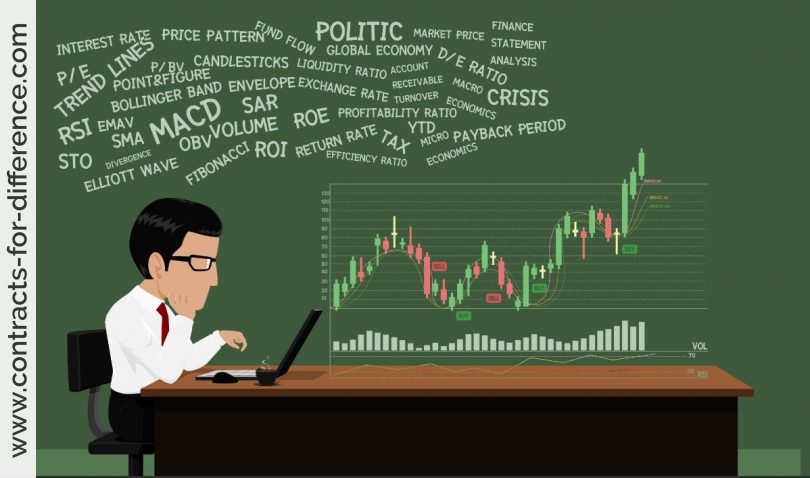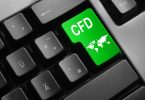I won’t go into any massive detail here, but, like I’ve said before, some of what I am explaining here may appear to be obvious. However, it’s also dangerous to make assumptions; I know that, from having personally trained over 1000 people how to trade. By ironing out any assumptions, and voicing them loud and clear, there is no reason for any later misunderstanding.
Technical Analysis, to me, is the reading and assessment of a financial chart and technical algorithmic indicators that show possible patterns of sentiment, and being able to track to a greater degree the changes in future sentiment. The goal of technical analysis is to be able to forecast the future movement of a share price with better than average accuracy – 100% accuracy would be great, but in practice you won’t achieve this, and the wonderful thing is that you do not have to in order to make money.
By means of technical analysis, we can see quite well where the markets are going and how they are going to react, given a certain event, and criteria. Stock prices follow a pattern because they are controlled by traders, who are people, and people are creatures of habit. As individuals tend to repeat themselves, operating with their instincts and memories, however flawed, we can detect the patterns. This enables us to trade accordingly and profit as a result of that analysis.
The reason why I say that Technical Analysis shows sentiment, rather than any definite signal, is simple. As you know, the markets are driven by emotion; fear and greed. These events are plotted on each chart, as a graphical form of emotion within the markets. As this changes, so it is reflected in the chart. Using our analysis, we gauge where these changes are likely to happen again, and this is where we see a change in sen-timent. A change in sentiment means a shift in the markets’ view and this will cause a change in the chart price. With my guidance, you will become an expert in determining the habits of the collective mind, and thus be able to anticipate share price movements.
Trading Shares with Technical Analysis
Many people are still skeptical in relation to technical analysis. I would try to make them understand how it was possible to make good returns from using a technical approach. Many people still swear by fundamentals and completely either ignore charts or don’t understand charts.
However it is very hard change people’s beliefs. Once someone has created a set of beliefs about something they will continue to filter all information to confirm their belief. I could never convince a devout Muslim that being a Catholic is the way they should live their life – or vice versa. It just doesn’t fit into their belief system.
There are many beliefs about the stock market. No one is exactly sure what the stock market is doing or how to make money from it consistently. We all have to come to our own understanding of what it is and do the best we can from there.
My own journey into understanding markets started way back when we did not have internet. My interest in technical analysis started when I graduated from a degree in statistics many years ago. I would have a roll of charting paper sprawled across my desk and would mark every closing price in the market on my charts in an effort to increase my understanding of why the markets moved in the way that they did.
I found that it is not like reading a book of technical analysis and you will know all there is to know about technical analysis. Not so my friend. There is no instruction manual.
I am personally very doubtful of most mainstream technical analysis. I find it far too complicated in its interpretation of market price action and also lacking of any strict risk/reward criteria. When all eyes are looking at the same obvious structure, the chances of that structure being a quick money maker are very remote.
The chart is not a predictor of the future. It is only a chart of past market behaviour. It is just a map of human psychology. But as a psychologist, I can assure you that most humans do the same things over and over.
I will then try and use this knowledge of the behaviour of the masses to find good risk/reward entry points into the market. However these can be places where I can be proven wrong very quickly.
If I know I am wrong after losing only a very small percentage of my capital (using a good money management plan), and I have a high confidence that I will reach my initial target more often than not, then I have a probability for trading the market that involves the least amount of stress. It helps me to leave my emotions behind when I am trading.
By ensuring I have a distinct set of rules to manage my behaviour when confronting the sharks lurking in the markets I can be in control rather than letting the markets control me.
I am sure there are a many more different ways to make money in the markets than the way that I have found, but I also know there are far more ways to lose money!
With 80% of people losing money in the markets it is quite clear that if you have found a way to beat the market consistently then you are seeing something that others aren’t.
To be able to use technical analysis, you have to use certain indicators on your charts. There are many different indicators available, but I suggest that you keep it simple and only use a few indicators. This will give you enough information. Don’t forget that we only look for probabilities to go our way, not certainties.
A technical indicator is a graphical representation of mathematical formula (a line, histogram, or series of points on a chart window) that is used to assist the analysis of market conditions. Technical Indicators include:
- Price
- Volume
- Trends and Moving Averages
- Relative Strength Index (RSI)
- Stochastics
- MACD
- And many more
I suggest that you become familiar with some of these indicators and construct a trading plan around these.







